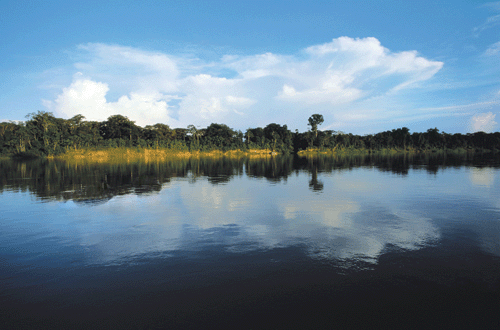Brazil is an Atlantic nation in search of its Pacific destiny. Although it has long nurtured the dream of becoming a two-ocean, continental power, much as a young and expanding America was drawn across the continent to the Pacifc by the call of Manifest Destiny, South America’s largest country has for most of its history faced eastward to European and North American markets. but as global markets shift toward China and the emerging economies of Asia, the dream of westward expansion has been revived by one of the world’s biggest and most imporbably construction projects.
The Interoceanica, a highway stretching a thousand kilometers across the Amazon Basin, up the 15,000-foot-high face of the Andes and down to the Pacific in Peru, is as worrying as it is ambitious. With additional branches already planned, it has emerged as a serious threat to the human and natural ecology of the greatest expanse of rainforest on the planet.
What makes it especially worrying is that construction of the highway, estimated to cost $4 billion, has received almost no attention and little debate. Its origins trace back to September 2000, when a meeting of South American presidents convened by Brazilian President Fernando Henrique Cardoso endorsed a plan called the Initiative of the Integration of the Regional Infrastructure of South America, known as IIRSA.
At the time, the topic of the day was regional economic integration. In the minds of many of its leaders South America was falling behind in the global economy as regional trade blocs, such as NAFTA and the expanding European Union (EU), seemed to grab the economic initiative. The U.S. proposal for a Free Trade Area of the Americas was perceived by Brazil as a threat to its claims of leadership. The presidents endorsed a sprawling plan, the centerpiece of which was the Interoceanica highway, reviving an earlier idea for a transborder corridor that would facilitate Brazilian trade with China. Then called Transoceanica, but quickly dubbed the “Road to China,” the idea languished for more than a decade until it was reconceived as part of the sprawling IIRSA project, which pulled together national wish lists of no less than 350 infrastructure projects, including highways, bridges, railways, ports, airports, and transmission corridors…




